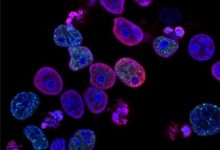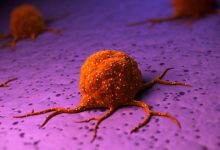
A new research led by UNIVERSITY OF ALBERTA FACULTY OF MEDICINE & DENTISTRY sheds light on how cancerous cells differ from healthy ones these new findings may possibly lead to the new advancement in strategies for therapeutic mediation for difficult-to-treat cancers in the future.
A team of researchers identified a modified protein acting as a “stop sign”. Researchers named this “stop sign” as a PIP-stop–inside cells that are overused by cancerous cells and effectively inhibits healthy ones from sorting material in the way they were designed to.
“We have discovered that breast cancer, leukemia, lymphoma and neuroblastoma cells have too many PIP-stops. This would upset protein function, and opens up a new avenue for developing drugs that block PIP-stop formation by kinase enzymes,” said Michael Overduin, a University of Alberta cancer researcher and professor of biochemistry, who led the research project.
As this modification prevents the protein from interacting with lipid molecules called PIP, hence team named the modification a PIP-stop
During their research, the researchers solved the 3D structure of a sorting nexin protein. Nexin protein plays a key role in sorting protein to their specific locations within the cells. After this, Powerful magnets in the U.K. and in the National High Field Nuclear Magnetic Resonance Centre (NANUC), Canada’s national magnet lab based in Edmonton, were then used to detect signals from within individual atoms within the protein structure.
The significant emphasis of this research was the structure of protein after which team was capable to determine the PIP-stop and see how it was inhibiting the proper functioning of the protein.
During their study, they also found that samples from cancer patients have too many PIP-stops, which was the reason behind the unregulated growth seen in tumor cells. Similar PIP-stops were found to be overused in a large number of other proteins involved in other cancer types, where they could also influence tumor growth.
“Our goal now is to design inhibitors for the overactive kinases that create PIP-stops, and to use this information to design drug molecules that block the progression of cancers, particularly those which lack effective treatments,” said Overduin.
PIP-stops appear to be frequently altered in a variety of cancers, suggesting a novel point of causativeness and possible involvement. This research has opens the door to new therapeutic possibilities.






